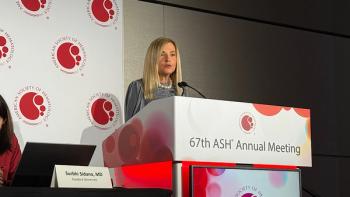
New Therapies Offer Possible Cures but Pose Affordability Challenges
The upfront prices of potentially curative therapies are terrifying to commercial payers and government payers alike. A panel on the last day of ISPOR 2019 discussed these issues in a session called, “Is Affordability Driving a Need to Revolutionize Drug Pricing?”
There are more drugs on the market today revolutionizing diseases that were once thought to be death sentences, like chimeric antigen receptor T-cell therapy for cancer. But their upfront prices are terrifying commercial payers and government payers alike. A panel on the last day of ISPOR 2019 discussed these issues in a session called, “Is Affordability Driving a Need to Revolutionize Drug Pricing?”
“I think we could probably spend all day on this topic,” said moderator Colleen M. Flood, FRSC, a health law and policy professor at the University of Ottawa. Small patient populations with challenging, rare, and life-threatening diseases may have the option of using targeted drugs, which may be more cost-effective in the long run but are raising affordability challenges, she said.
She asked Lou Garrison, PhD, the assistant director of the Pharmaceutical Outcomes Research and Policy Program at the University of Washington, to discuss some of the pricing approaches that are being tried to address the challenge.
Most economists would settle on differential pricing across countries, he said, but how to do that in a way that makes sense is a challenge. Innovative medicines are a “different commodity” than other traditional healthcare services, and Garrison said they have “properties of global public goods.” On the other hand, there has to be incentives for innovation, he said.
Mark Trusheim, MS, BS, a strategic director at MIT NEWDIGS, discussed some of the innovative approaches to pricing that are being tried to address 3 challenges related to life-changing therapies: the timing of payments; uncertainty about performance, or how long therapies will work; and the volatility that may occur, especially when taking into account small patient populations and small health plans.
Some approaches are milestone-based contracts, but he said NEWDIG prefers multiyear annuity payments. Another approach is, he said, are carve-outs, or what Trusheim called “an old idea in a new context.”
In this model, a disease carve-out might include a portfolio of gene therapies for rare diseases and add medical management into it.
One panelist, Mina Bhanji, a senior vice president for Global Market Access at Merck, said the pharmaceutical industry represents a smaller part of healthcare spending than hospital and physician services, and warned about “unintended consequences” if pricing approaches curtailed innovation.
“We are the only part of the system that has cost containment built into it,” she said, referring to the patent system. She added that if misaligned incentives and inefficiencies could be reduced, that alone would help provide more access for patients.
Meindert Boysen, PharmD, MSc, the director for the technology appraisal and the highly specialized technologies programs at the UK’s National Institute for Health and Care Excellence, described how he has to translate innovation to both his committee members as well as payers.
“We place ourselves in England on the value side,” he said, and payers want to know how therapies will be implemented.
Newsletter
Stay ahead of policy, cost, and value—subscribe to AJMC for expert insights at the intersection of clinical care and health economics.









































